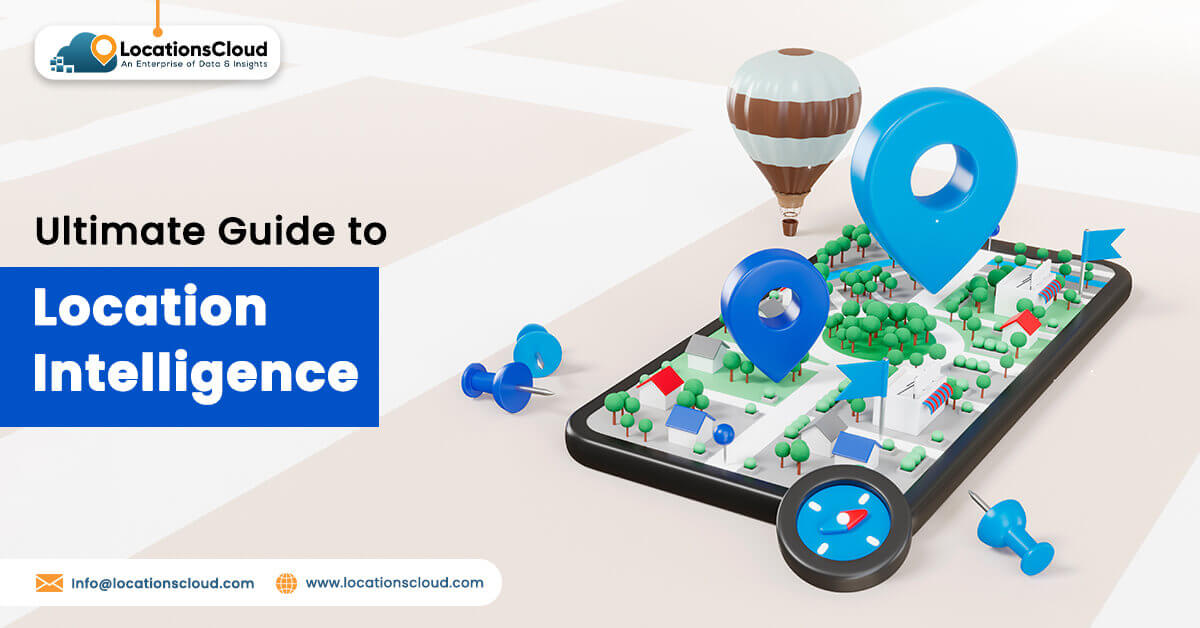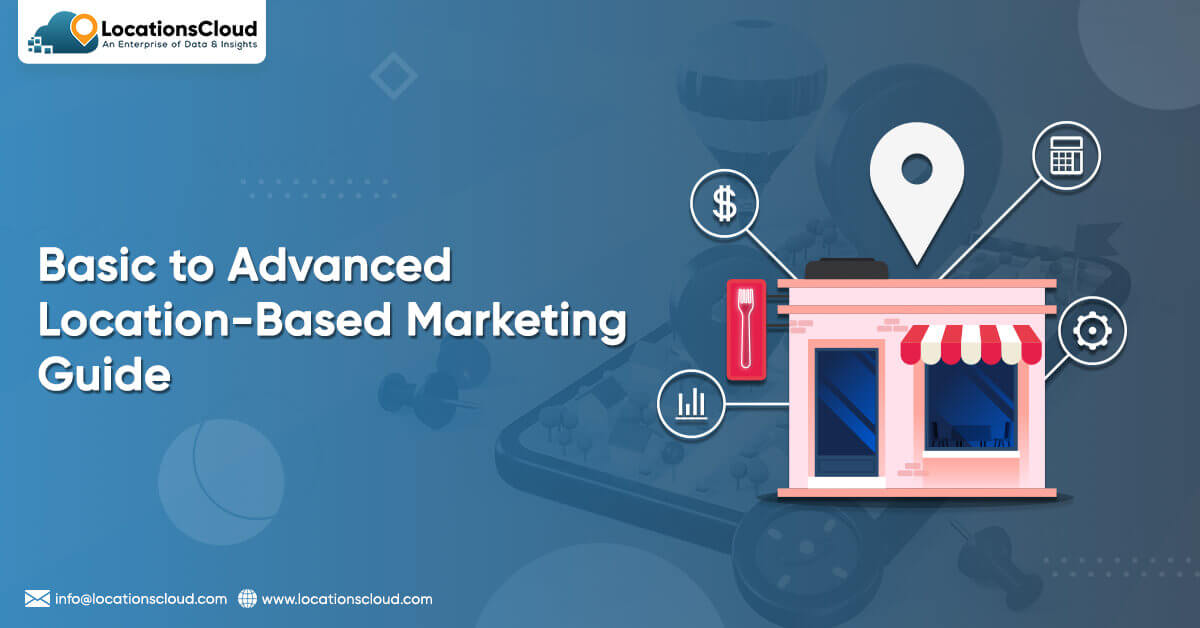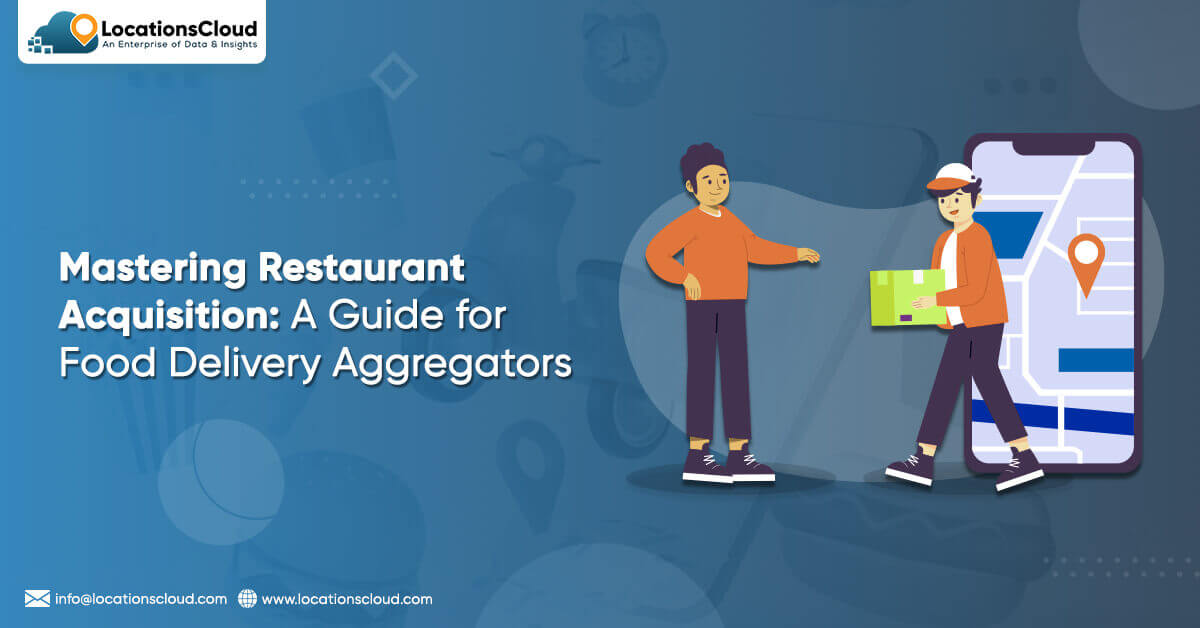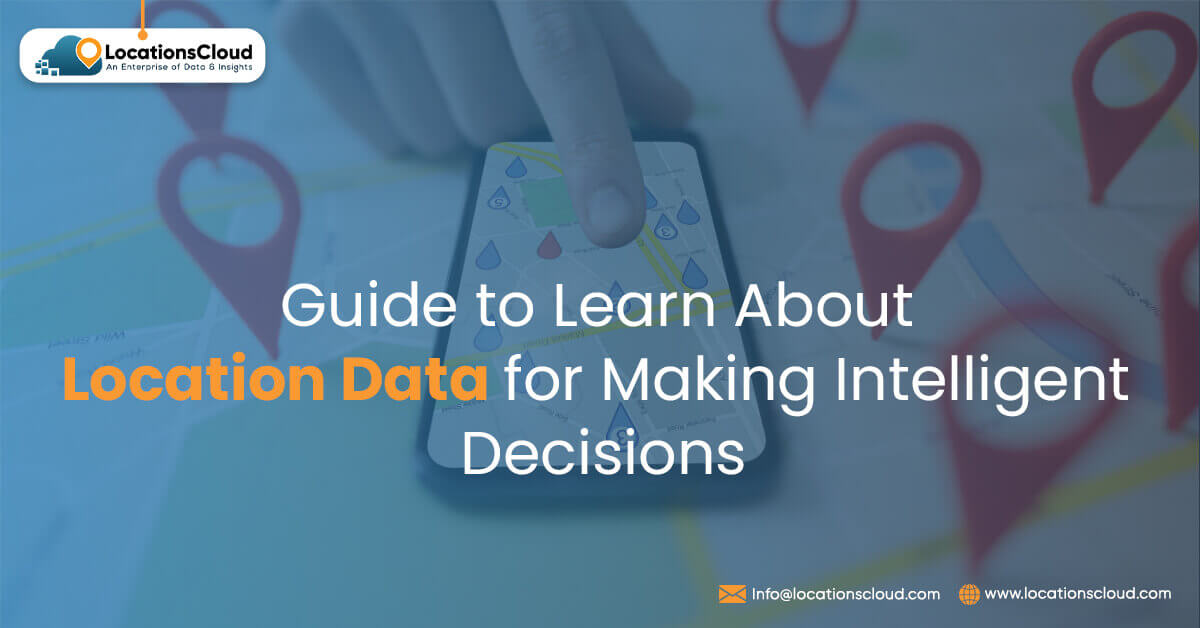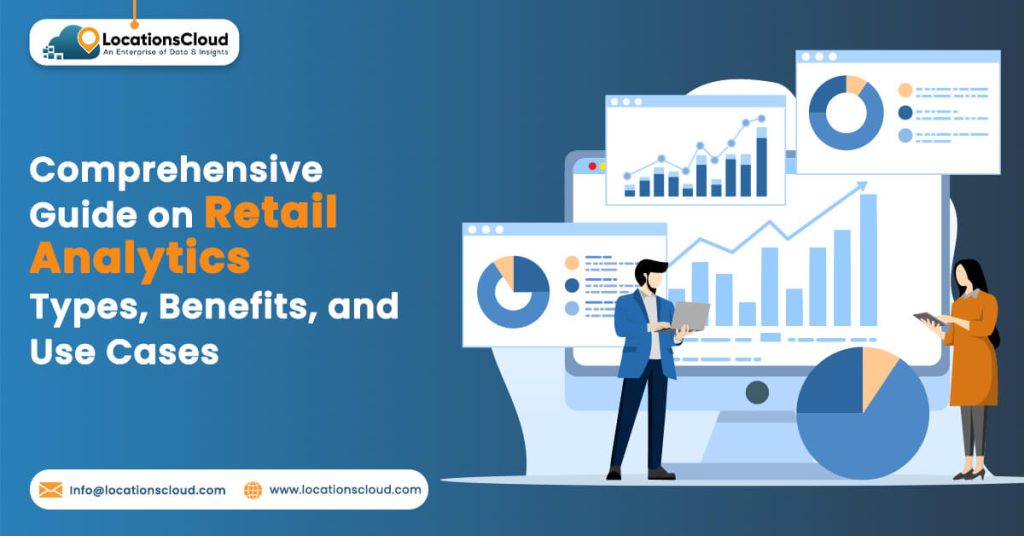
As a retail firm owner, you must continuously explore efficient methods of doing things differently. Whether it is making sure your stores are well-stocked with the right products, running promotions at the correct times, or understanding who your customers are and what drives them to purchase. Data analysis always plays a vital role in optimizing operations, boosting sales, and ultimately driving success.
Retail Analytics gives retailers the data they require to make informed decisions on essential factors of retail business, like
- Inventory management
- Pricing
- Planning
Retail Analytics helps organizations boost earnings growth and scale to become dominant forces in their industry. This guide will discuss the basics of retail analytics, various types of retail analytics, benefits, challenges, and best practices for retail analytics. Stay here, and let’s get started!
What is Retail Analytics?
Retail analytics gives insights into sales, inventory, customers, and other necessary factors influencing retailers’ decision-making. The discipline combines various fields to provide a comprehensive view of a retail business’s health and sales and general areas of improvement and reinforcement.
Notably, retail analytics is used to assist business firms in making better decisions, functioning more efficiently, and providing customers with better service analytics for customers. Retail analysis goes beyond simple data analysis, employing techniques such as data mining and data discovery to filter datasets and provide actionable Business intelligence insights that can be used in the short term.
Furthermore, businesses use facts and figures to understand their target demographics better. Retailers can use sales data analysis to determine their ideal customers based on various factors such as age, preferences, purchasing trends, locations, and more.
Companies can gain a competitive advantage in predicting business and consumer demands by prioritizing retail analytics essentials that focus on the process rather than the data itself.
Importance of Retail Analytics
Retail analytics has eliminated guesswork from various decision-making processes. Even the most experienced retail executives must navigate a massive amount of internal and external data, including transactional data, merchandise trends, and consumer behavior. Solid analytics technologies simplify this data, allowing retailers to make educated decisions faster and more accurately.
The retail industry is highly competitive, with narrow profit margins. Modest product selection and inventory control modifications can significantly decrease stockouts or, conversely, the need for huge discounts. Those changes may, in turn, significantly impact the financial line. For instance, fashion retailers can use data analytics to determine the designs and sizes to order in what amounts for various regions based on local shopping habits and demographics.
Additionally, analytics provide you with a far better understanding of your company’s operations than otherwise. Here are some more insights that analytics can reveal, such as:
- The quantity and worth of goods sold in a typical order.
- Which goods are the best-selling, worst-selling, and everything in between?
- To learn more about your in-store conversation rates, view sales by an hour.
- Best and Worst-selling staff members.
Retailers must properly implement retail analytics in coordination with the quickly evolving social and business landscape to avoid worrying about the rate of change, no matter what is happening worldwide.
Benefits of Retail Analytics
Retailers can enhance their margins, save labor and administrative charges, and increase sales by utilizing retail analytics. Retail Analytics is incredibly powerful since it can benefit any business, big or small. The following are the most notable benefits of considering retail analytics in your business:
Customer Behavior Insights
The primary benefit of retail analytics is it provides precise insights into customer behavior. Knowing how to calculate return on investment (ROI) simplifies managing part of a business firm. This is made feasible using retail analytics. Retail analytics provide an exact scene of what works and what does not for retailers, from analyzing social comments on a product to assessing how a campaign boosts the store’s conversion rates.
Minimizing Stockouts and the Need for Discounts
Retail analytics assists customers in recognizing patterns in demand, allowing them to maintain an adequate supply of goods without drastically reducing prices to clear out excess stock. For instance, analytics can estimate the rate at which demand for fashion items influenced by social media influencers declines.
Enhancing Personalization
By better understanding customer preferences, retailers can outperform their competitors in terms of demand. For instance, a bookseller uses purchase history to notify patrons who have expressed interest in American history when a book by Ron Chernow is ready for preorder.
Increased Revenues and Margins
People are interested in your products, but how many and at what price you can sell them will determine how much money you make. With retail analytics, this fundamental sales problem can be made more straightforward by optimizing prices to maximize revenue. Advanced software for retail analytics can even automatically provide specific recommendations on how to boost your margins.
Enhanced Understanding of Trends
By using retail analytics to find trends and patterns, businesses can make better decisions in the future and react to market shifts faster. By analyzing sales and spending patterns, retailers can determine which products are the greatest and worst sellers. This enables them to decide which items to support more heavily and which to offer for sale or through other promotions.
Enhanced Client Satisfaction and Reliability
Businesses can gain a better understanding of the problems faced by their customers by utilizing retail analytics. Resolving these issues can enhance client happiness and satisfaction. For example, if the client routinely leaves their carts empty during particular stages of the checkout procedure, then this will be displayed in the data. Hence, enhancing the checkout process could boost revenues, customer satisfaction, and loyalty.
Enhanced Effectiveness of Marketing Campaigns
Your marketing staff adores analytics the most. Retail analytics is best for tracking the effectiveness of marketing campaigns. While website traffic and ad clicks are good, the main objective of any campaign should be sales. Sales trends will support your marketing team’s efforts, providing them with the data they require to determine what approaches to take to reach your target audience.
Price Optimization
Retailers adjust their prices depending on the market, competitors, and other outside variables. Analytics-driven dynamic pricing ensures that the price is always optimal for maximizing revenue and sales.
Sales Forecasting
Businesses can more accurately predict future sales using predictive analytics, which helps with planning and strategy development.
Recognizing Market Shifts
Retailers have an advantage when they can identify new trends before they can catch on. Retail analytics helps organizations quickly pivot or react by giving them insights into shifting consumer preferences.
Enhanced Product Distribution
Analytics can assist retailers in determining the best way to distribute products across various geographical areas, warehouses, and retail locations while cutting down on unnecessary transportation expenses. For instance, a sports equipment retailer can utilize analytics to determine that a two-degree temperature differential impacts sales of thermal undershirts. Based on this detail, the shop might allocate more such goods to a distribution facility nearest locations that are expected to experience colder winter temperatures.
Inventory Management
Inventory optimization becomes a crucial aspect of your organization when you deal with a wide range of products, particularly when those products expire or go out of season. You never want to run out of in-demand merchandise or be stuck with unsold inventory you must pay to dispose of. Furthermore, by tracking and managing, retail analytics can help you optimize your inventory depending on trends, seasons, and other factors.
Types of Retail Analytics
After learning about the definition and benefits of retail analytics, let’s look at the type of retail analytics.
Descriptive Analytics
Descriptive Analytics comprehensively performs various business operations, such as transaction history, inventory fluctuations, promotional success, etc. Retailers have used descriptive analytics to evaluate the response rates, cost per lead, and conversion rates of direct mail campaigns.
However, descriptive analytics has evolved with the introduction of big data. Retailers can use website tracking data to determine the number of visitors to their website, the pages they viewed, the amount of time they spent on every page, the links they clicked, the links that resulted in purchases, and other details.
90% of businesses now utilize descriptive analytics, the most popular type of analytics. With the help of descriptive analytics, you can monitor which of your deployments generates more revenue and performs better, helping you determine which hurts your organization. Data mining and aggregation would be necessary for this. Descriptive analytics can be used for real-world applications, such as understanding general product demand or providing insights into behavioral trends. Both examine demand across a specific time frame or consumer base. It could be used in business planning to compare key performance indicators across time and assess the effectiveness of marketing campaigns.
Diagnostic Analytics
Retail analytics that aims to determine what went wrong are known as diagnostic analytics. In today’s data-driven atmosphere, it is difficult for humans to complete this work. With machine learning and Artificial Intelligence, larger shops with billions of data points and increasing complexity can implement diagnostic analytics successfully.
Businesses can use various diagnostic analytics techniques, such as data mining and data drilling, to gain insights into the origin of their data trends. To comprehend the underlying causes of trends, businesses may need to examine data from various sources, including external data. For instance, diagnostic analytics uses data from various sources—like open email rates or public holidays—to explain why conversions went up.
The initial step in data analysis is usually descriptive analytics. Next, diagnostic analytics looks at the origin of particular trends to help businesses understand why they happened. For instance, if the most recent sales report shows a greater-than-average increase in sales, the company can examine internal sales data to find out if new products or particular consumers caused the increase. Diagnostic analytics can also use outside data, such as competitors’ activity or weather trends.
Predictive Analytics
Businesses can forecast patterns and customer behavior with predictive analytics using historical associations found by diagnostic analytics. Assume that proficiency in reading figures and charts is a prerequisite for descriptive analytics. Predictive analytics, therefore, requires a high skill level in converting these numbers into answers to various queries. Retail analytics forecasting trend lines are created by analyzing vast amounts of data using various statistical techniques, such as data mining and machine learning. Predictive analytics is no exception to the rule that predictions are never sure. Management must verify with their analysts the precision of the data, the representativeness of their clientele or any biases, and the circumstances that could alter the overall trend.
This kind of analysis is used in various retail analytics use cases. You can forecast which products will be in great demand at any given time of year by using the complete collection of data you gathered and analyzed over a certain period. This information helps you calculate the best possible market pricing. Ultimately, you can use analytical outcomes to streamline the processes at every stage of the sales process.
Prescriptive Analytics
A subset of data analytics known as prescriptive analytics suggests ways to enhance company performance in light of certain anticipated consequences. Prescriptive analytics advises retailers on the following steps to achieve the most significant outcomes.
Prescriptive analytics can ascertain the appropriate course of action for product pricing, efficient inventory control, and customer delivery logistics. It can also evaluate possible investment opportunities, arrange employment schedules, and optimize marketing strategies.
What are the Types of Businesses that Use Retail Analytics?
Retail analytics is not limited to one kind of company; it can be applied to a variety of retail organizations, each of which uniquely uses data:
Brick and Mortar Stores
Conventional retail establishments use analytics to enhance the in-person buying encounter. These companies can determine the busiest shopping hours and make employment decisions based on foot traffic data analysis. Furthermore, high-margin products are positioned in high-traffic locations due to shop layout optimization derived from observing customer movement.
E-Commerce Platforms
Online merchants have access to a vast amount of data. While abandoned cart insights help identify possible friction points in the purchasing process, website traffic analysis assists in identifying the most viewed websites. Analytics also enable e-retailers to provide customized product recommendations, enhancing the buying experience.
Omnichannel Retailers
These companies run both online and offline operations. Retail analytics allows them to establish a cohesive customer experience. Also, they can create a plan to boost in-store pickups or online sales through special web promotions by examining cross-platform sales data.
How is Retail Analytics Used to Search Locations for Expansion?
Retailers increasingly use retail analytics to choose new store locations based on foot traffic and other relevant data. This is how they search for it:
Historical Analysis of Foot Traffic
By analyzing retail foot traffic statistics and patterns in diverse areas, retailers can search for websites that consistently draw many people, suggesting the potential for robust store traffic.
Integration of Demographic and Socioeconomic Data
Retail analytics can combine socioeconomic and demographic data with foot traffic data. By doing this, the shop owner can maximize the potential for sales by ensuring that the foot traffic in a particular area corresponds with their target customer.
Competitor Analysis
Analytical tools can assess competitors’ performance and presence in various areas. Retailers can then choose to enter underrepresented markets or take a calculated risk by positioning themselves against competitors.
Event-based Traffic Analysis
Stores can evaluate the impact of neighborhood festivals, events, or other get-togethers on foot traffic. Venues that host frequent events could increase sales opportunities.
Predictive Modeling
Advanced analytics can anticipate possible foot traffic and sales Using various criteria, such as projected infrastructure patterns, advanced social projects, population growth, and local patterns.
By utilizing these data points, retail analytics gives the merchant a comprehensive picture of possible store locations, ensuring their new locations are well-positioned for optimum success.
Retail Analytics Tools & Techniques
Retail analytics tools assist companies in locating and evaluating consumer information to offer insights on a range of topics, such as the best-selling items, the most popular times to buy them, and the demographics who buy them. Retailers can obtain this data with the aid of several retail analytics solutions, such as:
Point of Sale System
Retailers use point of sale (POS) systems, such as cash registers, in-store to handle inventory and sales transactions.
Google Analytics
Online Google monitoring shops need access to Google Analytics to track various insights such as website traffic, conversions, and user behavior.
Foot Traffic Counter
These devices monitor foot traffic in and out of a business. Foot traffic figures can be recorded digitally using cameras and retail tracking software or manually with counters.
Inventory Analytics
Inventory analytics optimizes inventory management using tracking metric methodologies, enabling firms to satisfy customer demand while minimizing expenses.
Email Analytics
Email analytics is the process of gathering, examining, and summarizing data related to email marketing. Retailers can use it to make data-driven decisions about their email communication strategy and obtain insights into their email campaigns’ effectiveness.
Challenges in Retail Analytics and How to Overcome Them?
Retail Analytics implementation presents several problems despite its various benefits
- Data Silos and Integration Problems
Data is frequently kept in separate systems, which makes integration difficult. To overcome this, an integrated IT architecture with smooth communication between all data sources is necessary.
- Real-Time Analysis Restraints
Data might soon become outdated in the dynamic retail environment. Robust IT infrastructure and sophisticated analytical tools are necessary for real-time analysis.
- Training and Chain Management
Introducing new analytical tools might be unsettling. A thorough training program must be in place for personnel to comprehend and use these tools efficiently.
- Ensured Data Accuracy and Quality
Low-quality data might result in inaccurate insights. Retailers need to ensure the accuracy of their assessments by implementing strict procedures for data cleaning and validation.
Retail analytics will revolutionize the retail industry by managing these issues and utilizing a combination of technology, training, and reliable procedures.
Best Practices of Retail Analytics
Even while retail analytics is a very useful tool, there are some difficulties with it. There are a few best practices that a shop should adhere to in order to maximize the usage of analytics.
Rely mostly on consumer data
For any retailer, this is the data that matters most. When you are aware of your customer’s unique preferences, it is easier to customize your products to their needs and wants. Your company’s decisions and activities should be guided by customer data, which should also be gathered and examined as frequently as feasible.
Utilize Data Visualization Tools
These tools assist retailers in clearly communicating their data. They highlight key metrics and present them as graphs, charts, etc., for sales and customer satisfaction. These visual aids also assist merchants in analyzing data from many perspectives to obtain a deeper understanding prior to making decisions and acting.
Monitor Multiple Data Sources
Use several data sources for your analysis; relying solely on one source can produce unreliable results. Examining a variety of data sources, including sales transactions, rival activity, and market trends, may give you a more complete picture of the industry. This can help shops recognize emerging patterns and promptly identify and resolve issues.
Monitor KPIs
Key performance indicators, or KPIs, are quantifiable numbers that show how well a company is doing in relation to its goals. You may evaluate your performance and raise the caliber of your work by keeping track of sales, earnings, and customer happiness. Retailers should match their KPIs to the SMART (specific, measurable, attainable, pertinent, and time-bound) goals they set to guarantee that the goals are reasonable.
Set Priorities for Your Goals
Setting priorities allows you to concentrate your resources—finances, time, and people—on the most critical objectives rather than attempting to accomplish them all at once. This lessens the overpowering nature of your goals and keeps you from becoming sidetracked and losing productivity in reaching your intended results.
Future Trends of Retail Analytics
A number of revolutionary changes are expected in the field of retail analytics as a result of the rapid advancement of technology. Observe the following trends:
Integration of AI and ML
These two concepts are more than simply catchphrases; they are potent instruments influencing analytics in the future. Retailers can optimize inventory management, customize marketing plans in real-time, and forecast customer behavior with never-before-seen precision thanks to machine learning algorithms.
The Emergence of Predictive Analytics
As retailers move away from reactive decision-making, they will depend more and more on predictive algorithms to predict trends, sales, and inventory demands. Businesses will benefit greatly from this proactive strategy in terms of competitive advantage.
Retail Analysis with Virtual Reality (VR) and Augmented Reality (AR)
The use of AR and VR in retail will increase as these technologies become more widely accepted. Virtual trial rooms and augmented reality-based store navigation are just two examples of how interactive technology and analytics are redefining the retail experience.
The Significance of Big Data
The volume of data produced is rising exponentially. Big Data technology and tools will be essential for processing, storing, and drawing conclusions from this enormous volume of data.
Personalization at Scale
Using analytics, retailers will offer a highly customized shopping experience that includes discounts, product recommendations, and marketing messages tailored to each customer’s unique interests and habits.
Final Thoughts
Retail analytics has established itself as a key component of contemporary retail strategy. One thing has been clear as we’ve explored all of its aspects, from its inherent advantages to its projected future, which is that retail analytics is now essential for companies looking to survive and remain relevant in a world where data is king. Retailers that embrace analytics approaches and tools are better able to move quickly, accurately, and with foresight through the complicated and changing terrain of contemporary commerce. With technology innovation driving yet another retail revolution, Retail Analytics is becoming the compass that leads companies to previously unheard-of levels of efficiency, growth, and consumer happiness. LocationsCloud is the ultimate service provider for retail analytics dataset.
